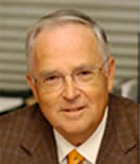A Tale of Two Revolutions
by Hugo Salinas Price, Plata:

In March, 1861, the kind-hearted Czar of Russia, Alexander II, issued a proclamation which liberated the serfs of Russia. Up to that time, the serfs had not been allowed to leave the huge agricultural tracts of land owned by the aristocracy of Russia. The serfs were attached by law, to the place where they were born.
As an unintended consequence of Czar Alexander’s generosity, his action prompted millions of ex-serfs to leave the isolation of the Russian vastness and move to the cities, where they became a rootless proletariat.
* * * * *
In 1945, the United States emerged triumphant from World War II, totally intact. The American economy was vibrant. Gold reserves held by the Federal Reserve, amounted to some 25 or 26 thousand tons.
The War having ended, countries around the world, which had sent their gold to the US for safekeeping, began to repatriate their gold.
While the Europeans and the Japanese were busily rebuilding their countries after the devastation of WW II, the US was intact and its population confident that a bright future lay ahead.
The population was so confident, that it began to object to the smoky industries which polluted the air it breathed, and soon the new government policy was to abolish contamination and substitute imports for the absence of production from smoky industries.
In due course, it was found that national production was not really necessary to the well-being of the American nation. Why produce, when the US could purchase everything it wanted by offering the poor exporters of the world, some of the precious Dollars of the US?
The unforeseen consequence of this policy was the de-industrialization of the US, and with the disappearance of its industry, there disappeared its well-paying jobs. But the disappearance of jobs was accompanied with the disappearance of gold from the Reserves of the US Government, as gold was sent abroad, in payment of increasing Trade Deficits with the rest of the world.
Thus came into existence a huge proletariat of unemployed Americans, who live off of government hand-outs. However, hand-outs on the part of government cannot prevent the masses of unemployed or sub-employed, from being unhappy. Unemployment or sub-employment is demoralizing.
As gold disappeared from Treasury vaults, in payment of export deficits, there finally arrived a moment – August 15, 1971 – when President Nixon was forced to stop paying for US Export Deficits, in gold. From that moment to the present, US has paid for imports with irredeemable Dollars.
* * * * *
Thus, we come to the present, where there is a remarkable similarity – for different reasons – in the discontent of the masses of US unemployed or sub-employed today, with the discontent of the rootless masses of Russian kulaks, in 1917.
In both cases: yesterday, the rootless kulaks of Russia of 1917, and today, the unemployed or sub-employed of the US, both are the object of manipulation by revolutionaries who wish to establish a different politic-economic system: Socialism.
* * * * *
The US cannot alter its ways. It cannot “return to gold”, because that would require a wrenching, unbearably painful social re-organization of US society.
President Trump may, perhaps, win the next election. But the fundamental cause of unrest, the unemployment or sub-employment of masses of Americans, cannot be eliminated without a return to gold – which is politically impossible.


